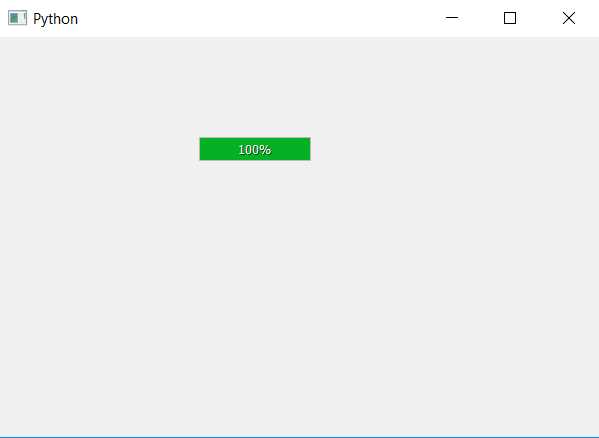En este artículo veremos cómo ajustar el tamaño de la barra de progreso. Ajustar el tamaño significa establecer el tamaño de la barra de progreso tanto como sea necesario, ni demasiado grande ni demasiado pequeño, solo el tamaño que puede abarcar todo el texto que contiene. Para ello utilizaremos el adjustSizemétodo.
Nota: Ajustar el tamaño establecerá el tamaño mínimo requerido. No depende del texto agregado usando el setFormatmétodo.
Sintaxis: bar.adjustSize()
Argumento: No requiere argumento.
Acción realizada: Ajustará el tamaño según la necesidad.
A continuación se muestra la implementación.
# importing libraries
from PyQt5.QtWidgets import *
from PyQt5 import QtCore, QtGui
from PyQt5.QtGui import *
from PyQt5.QtCore import *
import sys
class Window(QMainWindow):
def __init__(self):
super().__init__()
# setting title
self.setWindowTitle("Python ")
# setting geometry
self.setGeometry(100, 100, 600, 400)
# calling method
self.UiComponents()
# showing all the widgets
self.show()
# method for widgets
def UiComponents(self):
# creating progress bar
bar = QProgressBar(self)
# setting geometry to progress bar
bar.setGeometry(200, 100, 20, 50)
# setting the value
bar.setValue(100)
# setting alignment to center
bar.setAlignment(Qt.AlignCenter)
# adjusting the size of the progress bar
bar.adjustSize()
App = QApplication(sys.argv)
# create the instance of our Window
window = Window()
# start the app
sys.exit(App.exec())
Producción :
Publicación traducida automáticamente
Artículo escrito por rakshitarora y traducido por Barcelona Geeks. The original can be accessed here. Licence: CCBY-SA